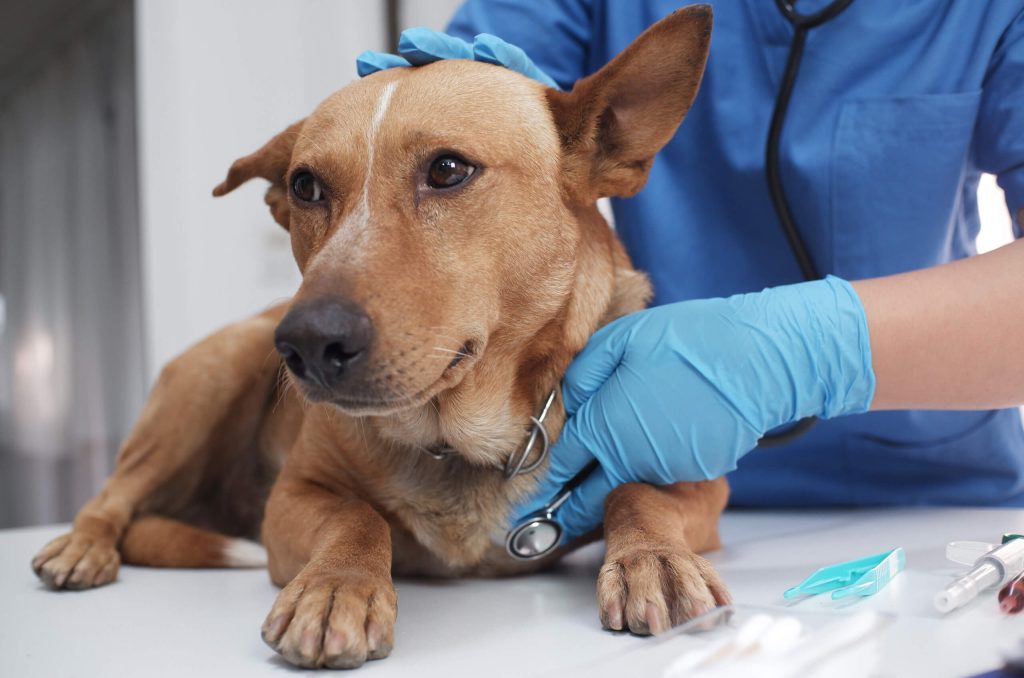Health Guidelines for the Proper Administration of Medications in Pets

Understanding Pet Medication Safety
The health and well-being of your pets depend significantly on the proper administration of medications. This responsibility is a crucial part of pet ownership, yet many pet owners may not fully grasp the intricacies involved. Miscommunication or mishandling can lead to severe health consequences for our furry friends. In Nigeria, with the increasing number of households adopting pets, the need for education on safe medication practices has never been more critical.
Why Proper Medication Administration Matters
Administering the right medication at the right dosage and time is essential for ensuring the safety and effectiveness of treatment. Consider the following key points:
- Dosage Accuracy: Administering the wrong dosage can lead to overdosing or underdosing, both of which can be harmful. A classic example can be seen in the use of common pain relievers like paracetamol for dogs; even a slight overdose can cause liver damage, whereas underdosing may fail to alleviate pain.
- Medication Interaction: Some medications may interact negatively, causing further complications. For instance, a pet on anti-inflammatory drugs should not be given certain antibiotics simultaneously without consulting a veterinarian since this can lead to stomach ulcers or kidney damage.
- Understanding Side Effects: Being aware of potential side effects can help in identifying issues early. For example, if a pet develops vomiting or lethargy after starting a new medication, knowing these signs can prompt immediate veterinary consultation.
In Nigeria, where pet ownership is rapidly increasing, understanding these health guidelines becomes even more essential. The availability of various medications in local markets can be a double-edged sword; while accessibility is beneficial, improper use or reliance on unverified treatments can endanger pets’ health. Implementing strict regulations regarding pet medications and providing educational resources for pet owners can greatly improve the situation.
Guidelines for Successful Medication Administration
To assist you in this journey, we will explore essential health guidelines that ensure your pets receive the proper care and medication. These guidelines not only safeguard the health of your pets but also enhance their quality of life.
First and foremost, always follow your veterinarian’s instructions precisely. This includes adhering to prescribed dosages and the duration of treatment. Additionally, keep all medications out of reach of pets and children; accidental ingestion can have serious consequences.

Secondly, maintain clear communication with your veterinarian. Don’t hesitate to ask questions about your pet’s medications, including the purpose, correct administration method, and potential side effects. This helps create a clearer understanding of what to expect during treatment.
Lastly, monitor your pet closely during their medication regimen. Keeping a journal of your pet’s behavior, appetite, and overall health can be invaluable. This documentation can help veterinarians track responses to treatments and make necessary adjustments. By prioritizing safe medication practices, you can ensure a healthier life for your beloved pets.
Stay tuned as we uncover more strategies to ensure safe and effective medication practices for your furry friends in Nigeria.
CHECK OUT: Click here to explore more
Best Practices for Administering Medications to Pets
The journey of ensuring safe and effective medication for your pets starts with understanding the fundamental alcohols of the task. Administering medications may seem straightforward, but it requires a combination of diligence, knowledge, and a careful approach to enhance your pet’s well-being. Below are crucial practices to adopt, which will not only ensure your pet’s safety but will also make the administration process smoother and less stressful for both you and your animal companion.
1. Know Your Pet’s Medical History
Before starting any medication, it is paramount to have a thorough understanding of your pet’s medical history. Share details about any pre-existing conditions, previous reactions to medications, or allergies with your veterinarian. This information can significantly shape treatment decisions. In Nigeria, where certain medications may be readily available without a prescription, pet owners must remain vigilant. Self-medication can often lead to severe health complications due to undisclosed allergies or adverse reactions.
2. Use the Right Tools
To administer medications effectively, always use the appropriate tools tailored for pets, such as syringes for liquid medications or pill dispensers for tablets. These tools help ensure accurate dosage and minimize stress during administration. Using special pet-friendly devices can make the process smoother and reduce the chances of your pet resisting or becoming anxious. For example:
- Syringes: Ideal for liquid medications, syringes allow for precise control over the dosage and make it easier to administer medications without spilling.
- Pill Splitters: If your veterinarian prescribes a pill that needs to be cut for the correct dosage, using a pill splitter ensures that the tablets are divided evenly and reduces waste.
- Medication Flavoring: Some pharmacies provide options to add flavors to medicines, making it more palatable for pets, especially cats who are notorious for being picky eaters.
3. Create a Calm Environment
When administering medication, the environment plays an integral role in how your pet perceives the experience. A calm setting can help ease any anxiety. Here are some tips on creating a conducive atmosphere:
- Quiet Space: Pick a noiseless area away from distractions and hustle, where your pet feels comfortable and safe.
- Positive Reinforcement: Incorporate praise or treats after administering medication to create a positive association. This can enhance cooperation during future doses.
- Routine Schedule: Establish a consistent routine for medication times, so your pet recognizes it as part of their daily activities, reducing apprehension.
By adopting these best practices, pet owners can significantly improve the outcomes of medication administration. Remember, a change in medication can affect your pet’s behavior or health; therefore, maintain regular communication with your veterinarian. This proactive approach ensures that your beloved pet remains safe and healthy throughout their treatment journey.
In the next sections, we will delve deeper into understanding different medication forms and their specific administration techniques tailored for pets. Stay tuned for more insightful guidelines to enhance your pet’s health and well-being.
| Category | Benefits & Considerations |
|---|---|
| Medication Types | Understanding various forms such as pills, liquids, or topical treatments aids in choosing the best method for your pet. |
| Dosage Accuracy | Accurate dosing prevents overdose or underdose, which can be crucial for the effectiveness of treatments. |
| Adverse Reactions | Monitoring for side effects is critical for timely intervention, ensuring your pet’s health remains a top priority. |
| Administering Techniques | Learning the best techniques to administer medication can help reduce stress for both the pet and owner. |
The management of pet medications is a delicate balance of ensuring the safety, effectiveness, and comfort of our furry companions. It’s essential to stay informed and proactive when it comes to health guidelines for pets, particularly regarding the administration of medications. Educating pet owners about the different types of medications and their administration methods can lead to better adherence and health outcomes. Engaging with veterinary professionals for comprehensive guidance is vital, as medications vary greatly and not every treatment will suit every animal. Furthermore, staying vigilant for any adverse reactions post-medication is a key aspect of responsible pet ownership. Through proper practices and attentive care, pet owners can enhance their pets’ well-being significantly, paving the way for healthier and happier lives. Continuing education in this area is paramount; for instance, utilizing resources from veterinary literature can deepen understanding and promote pet health longevity.
ADDITIONAL INSIGHTS: Expand your understanding here
Understanding Different Forms of Pet Medications
Medications for pets come in various forms, each requiring specific administration techniques and considerations. Understanding these different medication types not only ensures that the treatment is effective but also minimizes resistance from your pet. Below, we explore the primary forms of medications frequently prescribed for pets, along with best practices for each.
1. Oral Medications
Oral medications, which include tablets, capsules, and liquids, are among the most common forms prescribed. Administering these medications effectively can sometimes be challenging. Here are some key tips:
- Pill Administration: For tablets or capsules, try hiding them in a favored treat. Using “pill pockets” — soft treats designed to accommodate pills — can greatly increase the chances your pet will swallow the medication without resistance.
- Liquid Medications: Use a syringe to carefully squirt the liquid into the side of your pet’s mouth, avoiding the back of the throat to minimize choking risks. Ensure that you offer gentle praise right after to create a more positive experience.
- Dosage Calculation: Always double-check dosage instructions with your veterinarian, especially if dosing adjustments are needed. Knowing the precise dosage is vital to avoid both undermedicating and overdosing your pet.
2. Topical Medications
Topical medications include creams, ointments, and sprays, mostly prescribed for skin conditions or infections. Administering these types require a special focus on application techniques to ensure effective absorption. Here’s how:
- Preparation: Before applying topical treatments, ensure the affected area is clean and dry. This step is crucial, as it allows for better absorption of the medication.
- Application Techniques: Use gloves if necessary to avoid contact with your skin. Apply the product as directed, ensuring even coverage over the specified area. If your pet is resistant, enlist a helper to gently hold them while you apply the medication.
- Monitoring: Post-application, keep a close eye on your pet. Look for signs of irritation or allergic reactions, and reach out to your veterinarian if any unusual symptoms arise.
3. Injections
For pets needing more immediate or potent medication effects, injections may be required. This could either be done by a veterinarian or under guidance at home. Here’s how to effectively handle this method:
- Receiving Proper Training: If required to give injections at home, ensure you receive comprehensive training from your veterinarian. They should demonstrate the correct technique for injection to minimize pain and discomfort for your pet.
- Injection Sites: It’s essential to know the appropriate places for injection, which usually include the shoulder or thigh. Use the correct needle size based on your pet’s size and breed for safe administration.
- Post-Injection Care: Monitor your pet for any adverse reactions post-injection, including swelling, redness, or changes in behavior. Be sure to follow up with your veterinarian if you notice any concerning symptoms.
By learning about the various forms of medication available for your pets and the best practices to administer them, you can significantly improve your pet’s comfort and adherence to prescribed treatments. As you become more familiar with these methods, remember that staying informed and cautious can shield your beloved furry friends from additional stress and health complications. In the next sections, we will continue to expand our focus on legal and ethical considerations concerning pet medication in Nigeria.
YOU MAY ALSO LIKE: Read read another article
Conclusion
Administering medications to pets is a critical aspect of responsible pet ownership that directly impacts the well-being of our furry companions. Understanding health guidelines for the proper administration of medications in pets encompasses a variety of practices that ensure both safety and effectiveness. From oral medications to topical treatments and injections, each route of administration has its own set of requirements that pet owners must master.
Effective administration begins with knowledge. Pet owners should always consult with their veterinarians for precise dosage instructions and techniques tailored to their pets’ specific needs. The use of innovations like pill pockets, cleaning methods for topical applications, and proper injection training can make medication administration a less daunting experience for both pets and their owners. A core element of these practices is the emphasis on creating a positive environment to reduce stress and resistance from pets during treatment times.
Moreover, monitoring pets after administration is essential for recognizing any adverse reactions, ensuring timely intervention when needed. As pet owners in Nigeria strive for the best health outcomes for their animals, awareness of local regulations and ethical considerations surrounding pet medications further contributes to responsible practices. By diligently following these guidelines and equipping oneself with the right knowledge, pet owners can foster a healthier and happier life for their beloved companions. Ultimately, understanding the nuances of medication administration not only enhances treatment efficacy but also strengthens the bond between pets and their owners.


